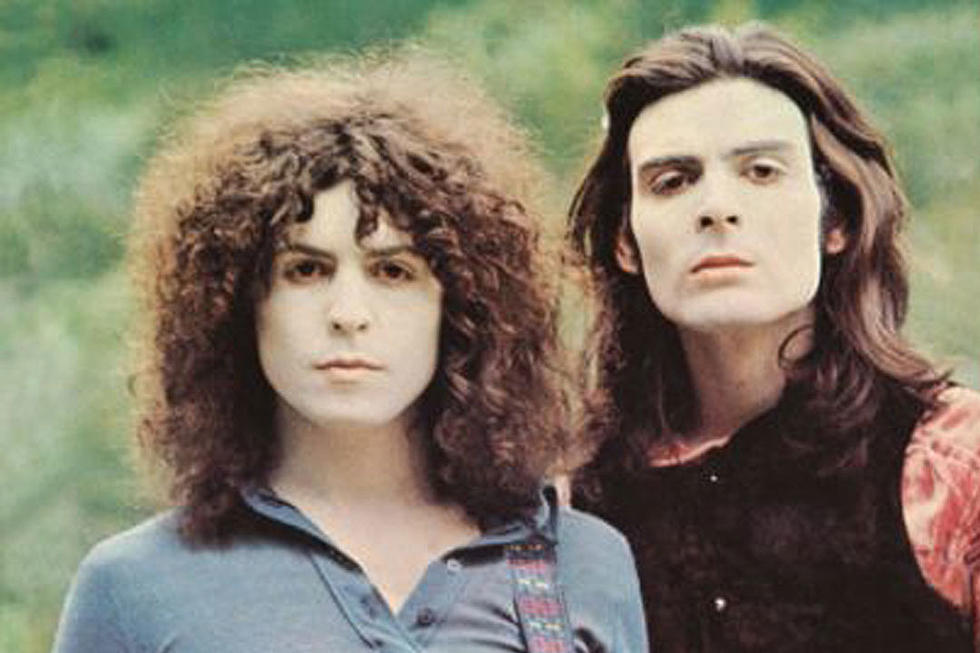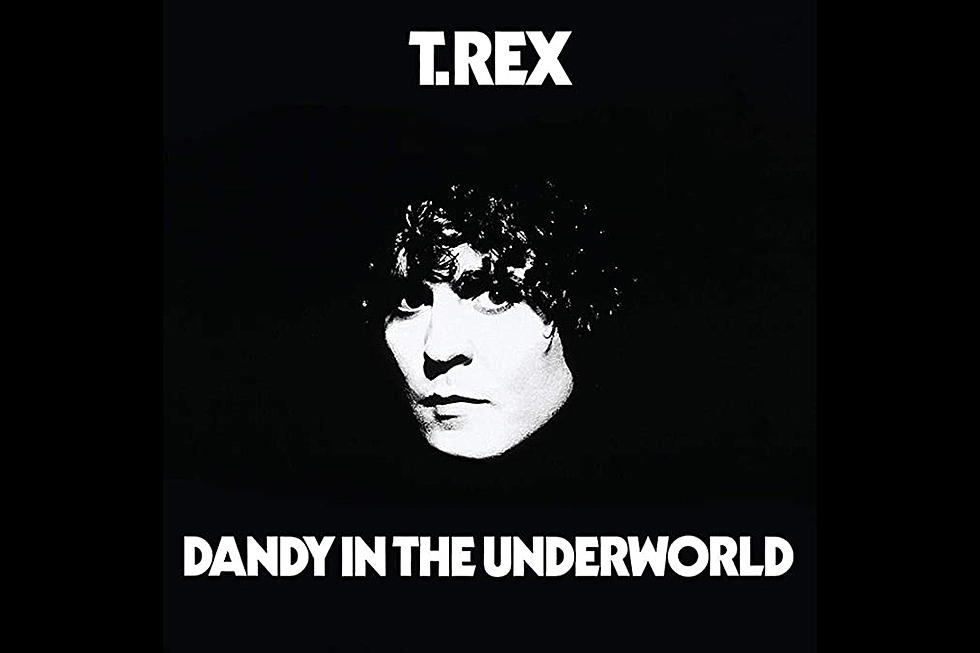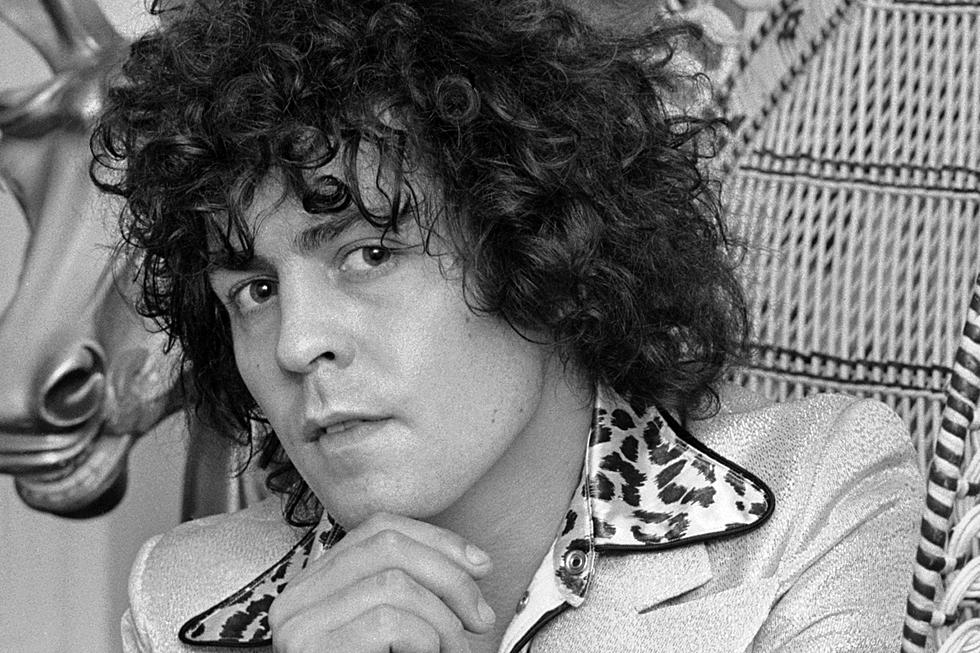
Why Marc Bolan Went Electric With ‘T. Rex’
Marc Bolan was destined to become a star. His early years as a singer-songwriter (not to mention a model) were filled with acoustic songs borrowed from Bob Dylan and Donovan's troubadour songbooks. But even in those early days, he mixed elements of fantasy and folklore into his music, staying away from the genre's usual social commentary and cliches.
By the mid-'60s, Bolan was a member of the mod pop art band John's Children, penning their best-known song, "Desdemona." After striking out on his own, he quickly became a fixture on England's flowering underground with his hippie duo Tyrannosaurus Rex. With Steve Peregrin Took on bongos, the pair recorded three albums and made the rounds in on the club and festival circuits.
But in early 1970, Took was replaced by Mickey Finn, and the group's acoustic sound started to included electric elements. Their 1969 single "King of the Rumbling Spires," as well as the A Beard of Stars album, recorded under the Tyrannosaurus Rex name, showed signs of Bolan's brave new path. With the Dec. 18 1970 release of the band's fourth album, titled simply T. Rex, Bolan's future loudly knocked.
Bolan recalled the previous year and his move from hippie hero to teen idol in an interview from 1971, following the fame and fortune of the breakthrough Electric Warrior album. "I decided that if I could go all out and just let go with the visual thing, I'd drop out and write science-fiction," he said. "My head is perfectly clean inside. I'm sorry if my actions upset some people, but I'm absolutely honest about what I'm doing, and I know it gives a lot of people pleasure. Those who are offended can always switch off."
Listen to T. Rex Perform 'Ride a White Swan'
The T. Rex album was an instant classic. Opening with the brief invocation of "The Children of Rarn," Bolan had moved into a space clearly his own. Things roll out quickly with the frantic bop of "Jewel," a sign of things to come. Even without drums, it hums along like an old-style rock 'n' roll tune. The album is filled with moments like this: "Childe," "Beltane Walk' and "One Inch Rock" are '50s rockers dressed up in early '70s flair. (Still, Bolan's mystic and softer side is on display in songs like "The Visit," "Diamond Meadows" and "Suneye.")
Bolan, along with Finn and producer Tony Visconti, mined a sound that, with just a bit of tweaking, would catapult Bolan and T. Rex onto the pop charts with a string of massive hits in their native U.K. Another key element was former Turtles members Mark Volam and Howard Kaylan, better known as Flo & Eddie, who supplied distinct backing vocals. They added the right amount of sweetening to the mix to help transform the songs into new pop for a new generation.
The final important piece of this evolution was the release of the "Ride a White Swan" single a month before the album. Even though it wasn't included on T. Rex, the song marked Bolan's entry onto the pop chart, climbing to No. 2 in early 1971. (The track was tacked on to the U.S. version of the album.) But it was the next single in February 1971, "Hot Love," that helped propel "T. Rextacy" in the U.K., as Bolan adopted a new look cast in glitter and glam.
"I'm not an intellectual at all," Bolan once said. "I just like music. It's a very great natural force. There is so little time for us all, I need to be able to say what I want quickly and to as many people as possible. Time passes so slowly if you are unaware of it and so quickly if you are aware of it."
T. Rex was a mighty powerful natural force.
See How T. Rex and Others Got Their Names
More From Ultimate Classic Rock









